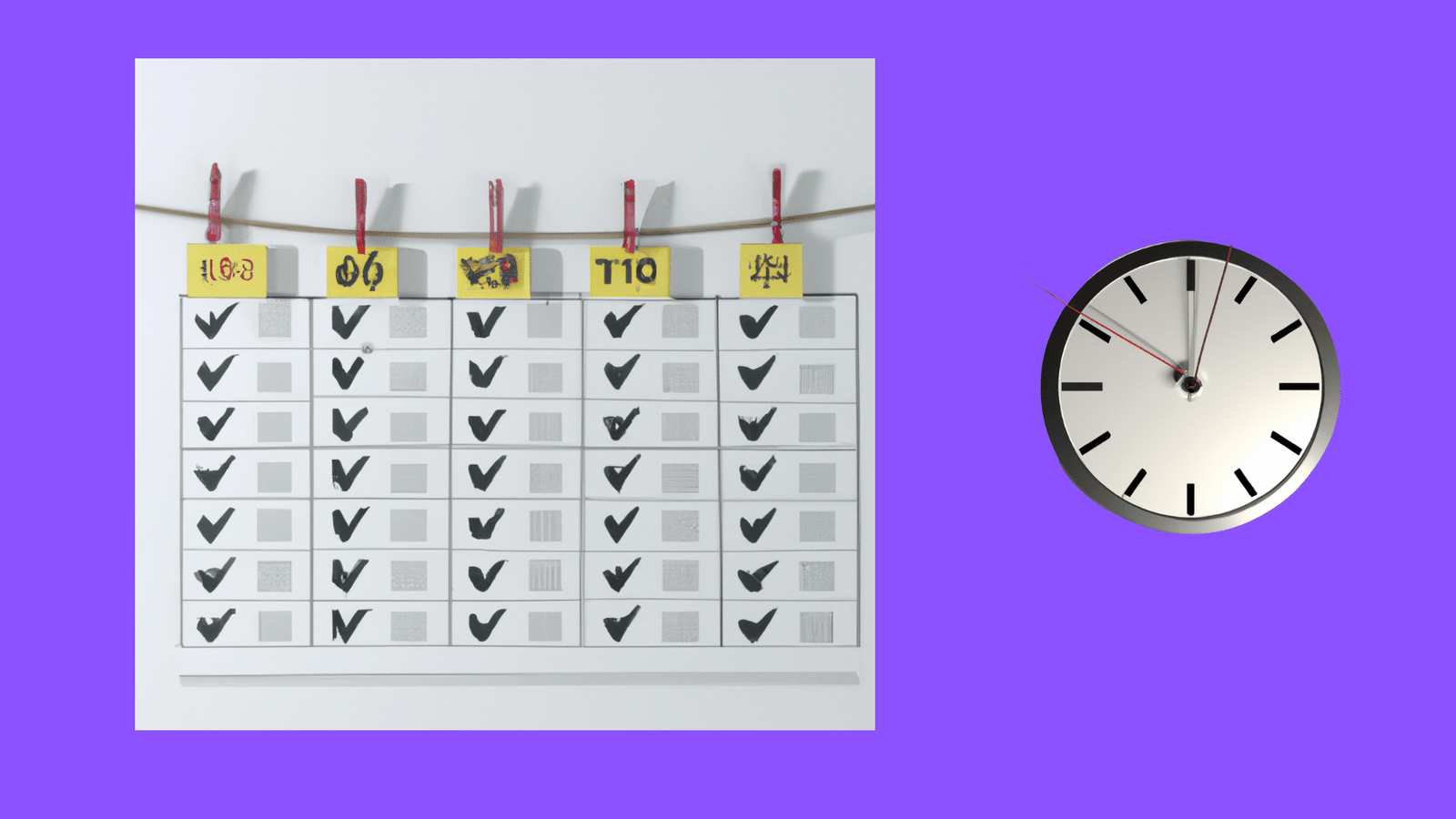Work-Life Balance
Work-life balance has become a vital concept in contemporary society, particularly as the traditional boundaries between work and personal life continue to blur. In an era characterized by technological advancements and the rise of remote work, individuals are increasingly finding it challenging to juggle professional responsibilities alongside personal commitments. The pursuit of work-life balance is not just a personal goal; it has implications for workplace productivity and employee well-being.
The evolution of the work-life balance concept can be traced back to the changes in workforce demographics and societal norms. Historically, work was confined to specific hours and locations, allowing individuals to firmly separate their professional life from personal time. However, with the advent of mobile communications and the internet, this demarcation has weakened, enabling work to invade personal time. As a result, professionals often report feelings of stress and burnout, necessitating a focused discussion on achieving genuine work-life balance.
In recent years, the importance of work-life balance has gained traction among organizations that are recognizing its impact on employee morale and retention rates. Many companies are actively developing policies designed to promote flexibility, such as remote working options, mental health days, and parental leave. As these changes materialize, the notion of work-life balance is no longer seen merely as an individual pursuit but as a corporate responsibility. Employers increasingly realize that fostering an environment where employees can thrive in both their personal and professional lives is essential for long-term success.
Given the complexities surrounding work-life balance, it is essential to understand its multifaceted nature. The need for balance extends beyond simple time management; it encompasses emotional, physical, and social well-being. Consequently, finding true harmony within the interplay of work and personal life is a critical endeavor for individuals and organizations alike.
The Myth of Work-Life Balance
The concept of work-life balance has gained significant attention in recent years, often seen as an ideal that professionals strive to achieve. However, many misconceptions surround this notion, leading to unrealistic expectations and increased stress. One prevalent belief is that a perfect equilibrium between work commitments and personal life is attainable. In reality, life is dynamic, and both work and personal responsibilities frequently fluctuate. As such, a constant state of balance may be more of a fleeting dream than a sustainable goal.
Societal pressures further exacerbate these misconceptions, compelling individuals to believe that they must excel in both their professional and personal lives simultaneously. The media often depicts successful individuals as those who flawlessly juggle their careers with family time, hobbies, and self-care. This portrayal can create a distorted image of what a balanced life looks like, leading to disillusionment among those who struggle to keep pace with such high standards. The pressure to conform to these ideals can result in anxiety and a feeling of inadequacy for many professionals.
Additionally, the narrative surrounding work-life balance often neglects the nuances of individual circumstances. Each person’s responsibilities and aspirations vary widely; thus, what constitutes balance for one individual may not be applicable to another. This misunderstanding can lead to frustration as people attempt to measure their lives against an impossible benchmark. Recognizing that work and personal life may not always be in perfect harmony is crucial. Instead of striving for an unattainable ideal, individuals can focus on setting realistic expectations, allowing for flexibility and adjustments as needed. By doing so, they can navigate their unique circumstances more effectively and cultivate a healthier relationship with both work and life.
The Reality of Work-Life Balance
Achieving a harmonious work-life balance is a formidable challenge for many individuals in today’s fast-paced world. As the boundaries between professional and personal responsibilities blur, the quest for equilibrium becomes increasingly complex. Numerous studies have highlighted the detrimental effects of imbalanced lifestyles on both mental and physical health. For instance, research from the American Psychological Association indicates that prolonged work hours lead to heightened stress levels, which can, in turn, contribute to anxiety, depression, and various chronic illnesses.
Statistics reveal that over 60% of employees report difficulties in managing work and personal commitments, underscoring the prevalence of this issue. The pressures of modern workplaces, driven by digital connectivity and the expectation of constant availability, exacerbate these challenges. In fact, data from the World Health Organization stresses that individuals experiencing work-related stress are at a higher risk of developing cardiovascular diseases, showcasing the concrete health implications of poor work-life balance.
Research also indicates that imbalanced work schedules can lead to diminished productivity, contrary to the assumed benefits of constantly staying engaged in work. Employees who prioritize personal time often report higher job satisfaction and improved overall well-being. This revelation advocates for a reevaluation of traditional work practices that prioritize hours spent in the office over actual productivity and personal fulfillment.
Moreover, achieving work-life balance necessitates a cultural shift within organizations. Employers have a significant role to play in promoting policies that encourage flexible working hours, remote work options, and mental health support. By fostering a work environment that values personal time as much as professional commitments, companies can enhance the well-being of their employees, leading to increased engagement and productivity in the long run. Understanding and addressing these challenges is essential for individuals seeking to create a more balanced and fulfilling life.
Strategies to Achieve Work-Life Balance
Achieving a harmonious work-life balance requires intentional strategies that cater to individual lifestyles and responsibilities. One of the most fundamental approaches is to set clear boundaries between work and personal life. This can be as simple as establishing specific work hours and communicating these to colleagues and family members. By defining a clear endpoint to the workday, individuals can better transition into their personal time, reducing the likelihood of work-related stress spilling over into personal activities.
Prioritizing tasks is another essential strategy for maintaining balance. Utilizing tools such as to-do lists or digital project management applications can help individuals prioritize their responsibilities effectively. By identifying urgent and important tasks while distinguishing them from those that can wait, individuals can allocate their time and energy more efficiently. This practice not only enhances productivity but also mitigates the feeling of being overwhelmed.
Effective time management plays a pivotal role in fostering work-life balance. Strategies such as the Pomodoro Technique, which involves working in focused intervals followed by short breaks, can enhance concentration while also bolstering overall productivity. Additionally, scheduling regular breaks throughout the workday allows for mental rejuvenation, preventing burnout and maintaining motivation over the long term.
Lastly, incorporating self-care practices into daily routines is vital for sustaining a work-life equilibrium. Engaging in activities that promote physical, emotional, and mental well-being, such as exercise, meditation, or pursuing hobbies, serves as an essential counterbalance to work demands. Prioritizing self-care not only enhances one’s quality of life but also promotes greater effectiveness in professional endeavors. By adopting these strategies, individuals can navigate their responsibilities while fostering a fulfilling personal life, thus achieving a more harmonious work-life balance.
The Role of Employers in Promoting Balance
Organizations play a critical role in supporting their employees’ quest for work-life balance. By implementing effective strategies that address the diverse needs of workers, companies can foster an environment where employees thrive both personally and professionally. One of the most significant approaches that employers can adopt is the introduction of flexible work arrangements. These arrangements can encompass remote work options, adjustable hours, and compressed workweeks, allowing employees to tailor their schedules to better align with family commitments, personal interests, and wellness activities. Such flexibility not only increases job satisfaction but also enhances productivity, as employees are more engaged when they feel their individual needs are acknowledged.
Beyond flexible work options, mental health support is another key component in promoting a healthy work-life balance. Employers are encouraged to create awareness around mental health issues and to provide resources such as counseling services, mental health days, and workshops focused on stress management and resilience. By prioritizing mental well-being, organizations can help reduce burnout and foster a culture of openness where employees feel comfortable discussing their challenges and seeking help when needed. This proactive approach not only demonstrates that the organization values its employees but also pays dividends in terms of retention and performance.
Furthermore, fostering a culture that values employee well-being is essential in promoting work-life balance. Organizations should recognize the importance of setting realistic expectations regarding workloads and deadlines. Establishing clear communication about priorities and encouraging employees to disconnect after working hours can help combat the “always-on” mentality that often permeates many workplaces today. By creating practices and policies that reflect a commitment to work-life balance, employers can significantly contribute to their employees’ happiness and productivity, reinforcing the idea that achieving harmony in life is not just an individual pursuit but a collective organizational goal.
Concrete Examples of Work-Life Balance Initiatives
Numerous companies have adopted innovative work-life balance initiatives, transforming their organizational culture and significantly improving employee satisfaction. One notable example is Google, which has integrated flexible working hours and remote work options as part of its core strategy. This approach allows employees to tailor their schedules, contributing to enhanced productivity and overall job satisfaction. Feedback from employees indicates a strong preference for this flexible arrangement, as it enables them to manage personal commitments without compromising on work responsibilities.
Another prominent case is Microsoft’s Japan office, which experimented with a four-day workweek. By reducing the workweek to just four days while maintaining full pay, the company aimed to boost employee morale and productivity. The initiative led to a remarkable 40% increase in productivity during the trial period. Employee responses highlighted a newfound sense of wellbeing and satisfaction, evidencing how a shorter workweek can foster a better work-life balance.
Moreover, Patagonia stands out with its commitment to environmental sustainability alongside employee well-being. The company has embraced a flexible work schedule that includes paid parental leave and on-site childcare services. Employees report a greater ability to balance family responsibilities with their professional commitments, leading to reduced stress and heightened loyalty to the organization.
Other companies, such as Salesforce and Buffer, have also implemented work-from-home policies and mental health support programs, demonstrating a commitment to fostering a balanced work environment. The positive outcomes reflect an increase in employee engagement and retention rates, pivotal elements for any organization aiming for long-term success. Through these initiatives, companies illustrate not only their dedication to work-life balance but also the benefits of such policies, reinforcing the connection between employee satisfaction and organizational performance.
Cultural Differences in Work-Life Balance
Work-life balance is a concept that transcends cultural boundaries; however, its understanding and implementation vary significantly across different societies. In Western cultures, particularly in countries like the United States and Canada, there is often an emphasis on individualism and personal achievement. This leads to a strong focus on career pursuits, often at the expense of family time and personal leisure. The prevailing attitude is that success is directly related to the amount of time and effort one invests in their professional life.
Conversely, many Eastern cultures, such as those found in Japan and South Korea, place a higher value on community and familial responsibilities. In these societies, the concept of work-life balance often integrates the importance of family obligations and social commitments. People in these cultures may prioritize group harmony and relationship building over individual career advancement, resulting in a different approach to work hours and personal time.
In Scandinavian countries, work-life balance is approached in a unique manner, supported by societal norms and government policies. For example, countries like Sweden and Denmark provide generous parental leave and promote shorter working hours. This reflects a cultural belief in the importance of downtime and leisure for overall well-being, encouraging individuals to allocate time to family and personal interests without the guilt often associated with taking time off in more career-driven societies.
In contrast, some countries have a less defined separation between work and personal life. In cultures such as those in India or Brazil, the flexibility of work hours allows for a dynamic interplay between professional and personal priorities. This approach may be driven by a strong communal lifestyle that values family connections and social gatherings, allowing individuals to balance responsibilities more fluidly.
Overall, understanding these cultural differences in work-life balance can help individuals navigate their own expectations and redefine what harmony means in their lives. Emphasizing the attributes unique to each culture offers valuable insights into how varied perceptions can influence one’s approach to achieving balance.
Personal Stories: Achieving Work-Life Harmony
The pursuit of work-life balance often feels like navigating turbulent waters; however, individual stories can shed light on the reality of achieving harmony in life. One such narrative comes from Laura, a marketing executive and a mother of two. For years, Laura struggled to juggle her professional commitments while ensuring her children felt valued and attended to. Initially, she found herself working long hours, often bringing work home, which left her feeling drained and disconnected from family life. It was a wake-up call when her children expressed feelings of neglect, prompting her to reassess her priorities. Laura began to implement strategies such as setting strict work boundaries and committing to family dinners each evening. This transition not only improved her relationship with her children but also boosted her productivity at work, illustrating the beneficial impact of a work-life balance.
Another insightful story is shared by Raj, a software developer who faced burnout due to his demanding job. Initially, he viewed long hours as a badge of honor, equating his dedication to professional success. However, after experiencing physical and mental fatigue, he realized the importance of leisure and self-care. Raj began to incorporate regular exercise into his routine, joined a local community group, and made a conscious effort to disconnect from technology during weekends. These adjustments significantly enhanced his overall well-being and allowed him to approach his work with renewed enthusiasm. Raj’s experience emphasizes that prioritizing personal health can lead to more sustainable career growth.
These personal anecdotes highlight that while the concept of work-life balance may seem elusive, it is attainable through intentional changes and reflective practices. Each journey is unique, requiring individuals to identify what truly matters to them and to make conscious decisions that align their professional duties with personal fulfillment. Such balanced living can lead to richer experiences in both personal and work spheres, suggesting that achieving work-life harmony is indeed a realistic goal.
Finding Your Own Balance
In navigating the complexities of modern life, the concept of work-life balance often emerges as both a desired goal and a challenging pursuit. This balance is not a one-size-fits-all solution; rather, it is a unique journey for each individual. Achieving harmony between professional obligations and personal life can vary significantly based on individual circumstances, career demands, family needs, and personal aspirations.
As outlined throughout this discussion, finding your personal work-life balance requires a thoughtful and adaptable approach. It is paramount to assess your current situation, discerning what elements contribute to your overall well-being and satisfaction. Reflecting on your values and priorities can guide you in making informed decisions that pave the way toward a more balanced existence.
Incorporating effective strategies, such as setting boundaries, practicing time management, and learning to say no, can facilitate your endeavor to create a fulfilling life. Furthermore, acknowledging that work-life balance is an ongoing process, rather than a fixed achievement, is essential. Regularly revisiting your goals and adjusting them in response to life’s changing dynamics will help you maintain equilibrium.
Ultimately, achieving work-life balance is not merely about dividing hours between work and leisure. It is about integrating passions, responsibilities, and personal fulfillment in a way that reflects your individuality. By embracing this journey and customizing strategies for your needs, you acknowledge that the quest for balance is a significant aspect of personal and professional growth. This ongoing commitment to self-reflection and adjustment can lead to a more harmonious and enriched life.






